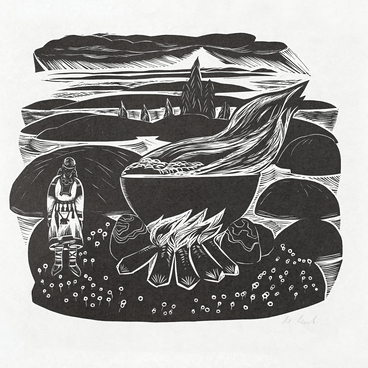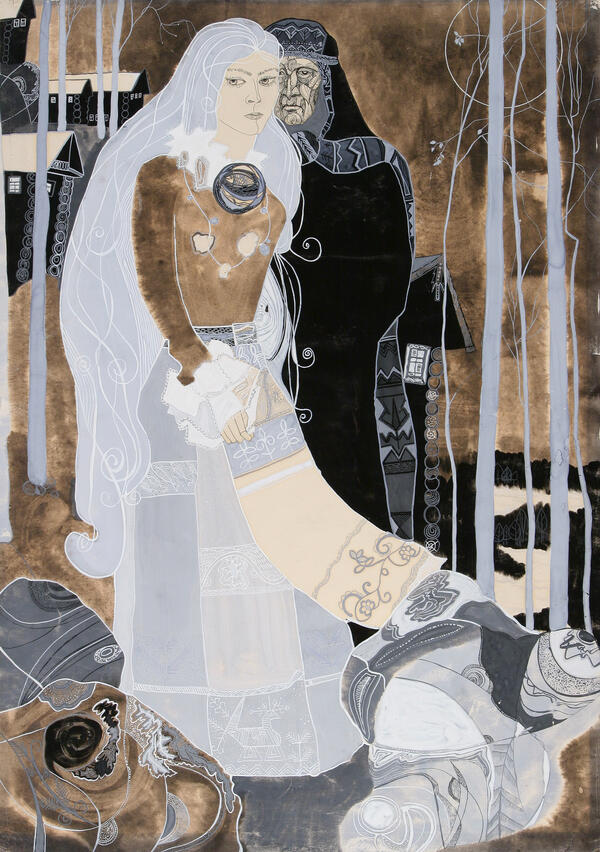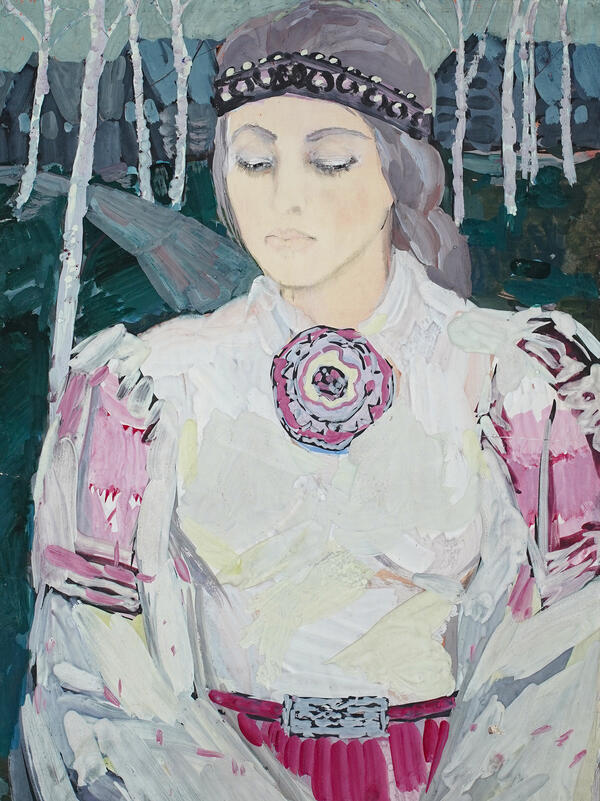Tamara Grigoryevna Yufa was a renowned artist, illustrator and set designer. She was awarded the State Prize of the Karelian Autonomous Soviet Socialist Republic. She was born in 1937 in the village of Kolodeznaya in the Lipetsk region. Tamara Yufa graduated from the Leningrad Art and Pedagogical College in 1959. In 1960, she moved and began working in Karelia.
A wedding is a key event in one’s life. It is no wonder that folk wisdom holds that getting married is akin to being born again. In her artworks, Tamara Yufa captures the sacred significance of the wedding ritual for the bride. The maiden stands at the threshold of two distinct worlds: the bright world full of parental love and warmth, and the unknown, dark world of the new family, where the young bride becomes a daughter-in-law. According to traditional Karelian customs, the daughter-in-law had to perform the most laborious household tasks, and was often assigned the most challenging duties. Within the strict hierarchical structure of the family, the young wife would be able to “step up” only after the birth of her first child.
It is no coincidence that lamenters were traditionally present at weddings. The lamentations expressed mainly grief at the departure of the bride from her family and home to the unknown house of her groom. The bride’s tears reflected her sorrow at the impending separation from her parents and family. Tamara Yufa’s poetic and philosophical work captures the transitional state of the bride. Her position was both transient and sacred, as it was believed that the maiden was, in a way, dying, and then at the wedding a young woman would be born. As a newlywed, she was vulnerable to the evil eye and negative thoughts, so her head was covered with a large veil to protect her from harm, with tassels hanging almost to the floor.
At a Karelian wedding, a sorcerer was always
present to ensure the correctness of the rituals. In the 19th century, Elias Lönnrot, while recording runes
and participating in rural ceremonies, noted how easily ancient pagan customs
and Christian beliefs coexisted among peasants. The multi-day wedding ceremony,
in accordance with ancient traditions, was interrupted for a church wedding service
and then the local sorcerer, or patvashka, would take over the ceremony again.
These traditions were prevalent everywhere in the North.







